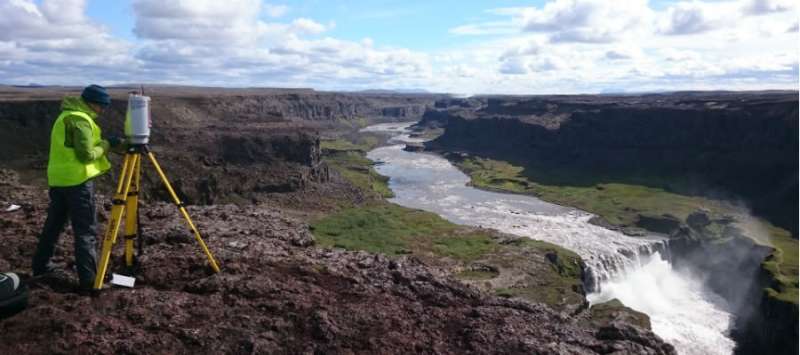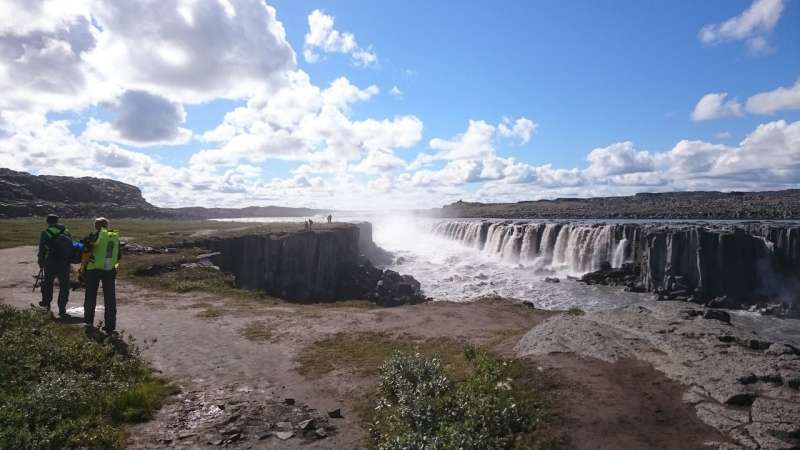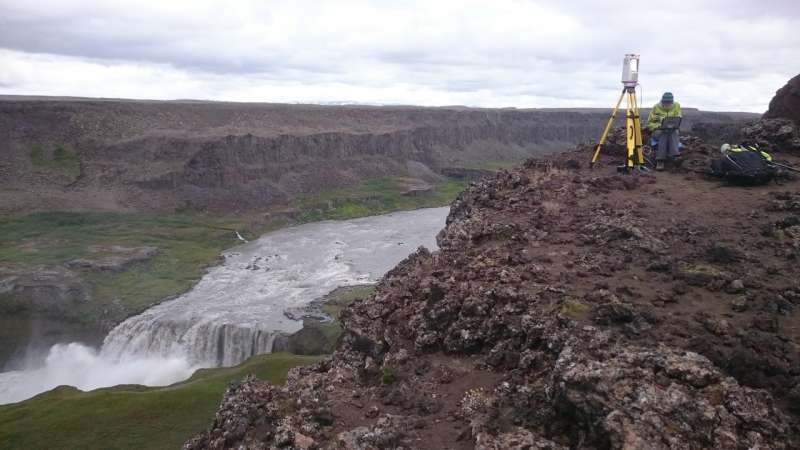Waterfalls offer insights into how rivers shape their surrounds

How much water flows through a river has little influence over long-term changes to its course and the surrounding landscape, a study of waterfalls shows.
Instead, the type of rock on a river bed has a greater impact on how rivers change over time, researchers found.
The key insight will help scientists understand how rivers evolve and influence their surrounds, when for instance sea level changes or tectonic plates move.
Lab tests were conducted on a scale model of a river. This included a waterfall feature, to examine how real-life waterfalls - which tend to migrate upstream over time, disrupting the landscape - are influenced by water flow and material forming the river bed.
Upstream movement of the waterfall was influenced mostly by the composition of the river bed, rather than by the water flow, the study revealed.
When the water flow changed, the resulting channel adjusted its shape to accommodate this, having little impact on the position of the waterfall. By contrast, varying the river bed material did significantly affect how quickly the waterfall moved upstream.
The findings help explain the outcome of previous studies from rivers around the world, which showed that changes to the landscape are not always directly linked to how large a river is. For example, small waterfalls in Scotland may migrate faster than the Niagara falls in North America.

When waterfalls migrate upstream, they are typically bounded by gentler landscapes than those downstream, which tend to have steeper slopes that are vulnerable to landslips.
The study, by the Universities of Edinburgh and Rennes in France, was published in Scientific Reports. It was funded by the Natural Environment Research Council and European Commission.
Dr Mikaël Attal, of the University of Edinburgh's School of GeoSciences, who took part in the study, said: "Accurately modelling how rivers change is important for understanding landscape evolution in the past, present and future. The nature of the rock on the river bed plays a more important role than the size of flow in influencing how rivers evolve, and ongoing studies should take this into account."

More information: Edwin R. C. Baynes et al, River self-organisation inhibits discharge control on waterfall migration, Scientific Reports (2018). DOI: 10.1038/s41598-018-20767-6
Journal information: Scientific Reports
Provided by University of Edinburgh



















